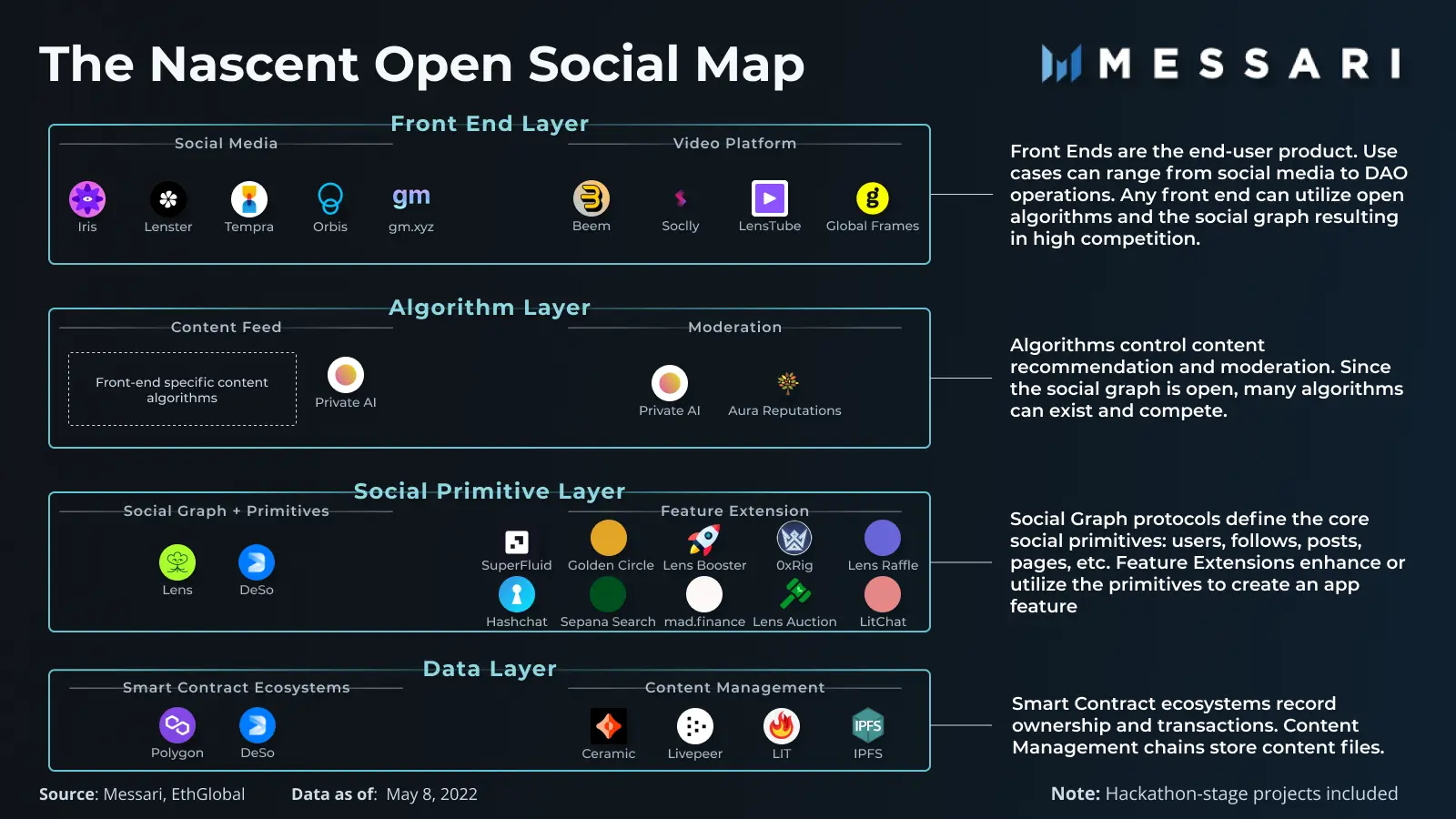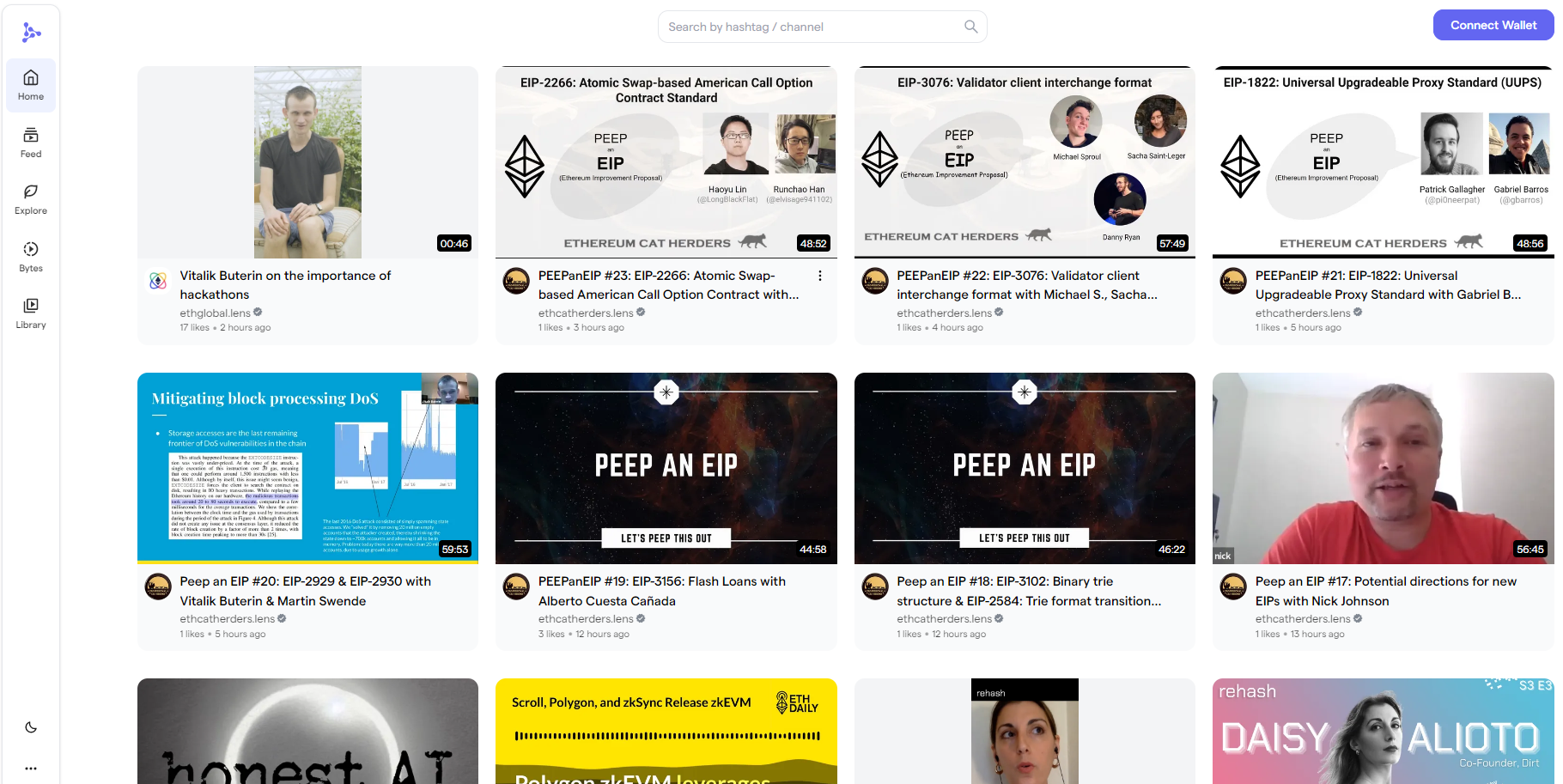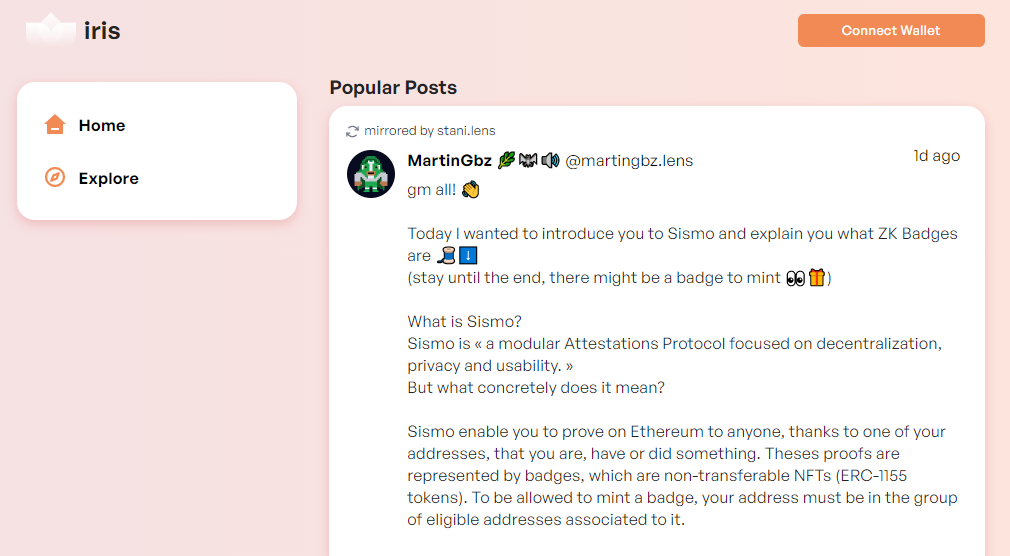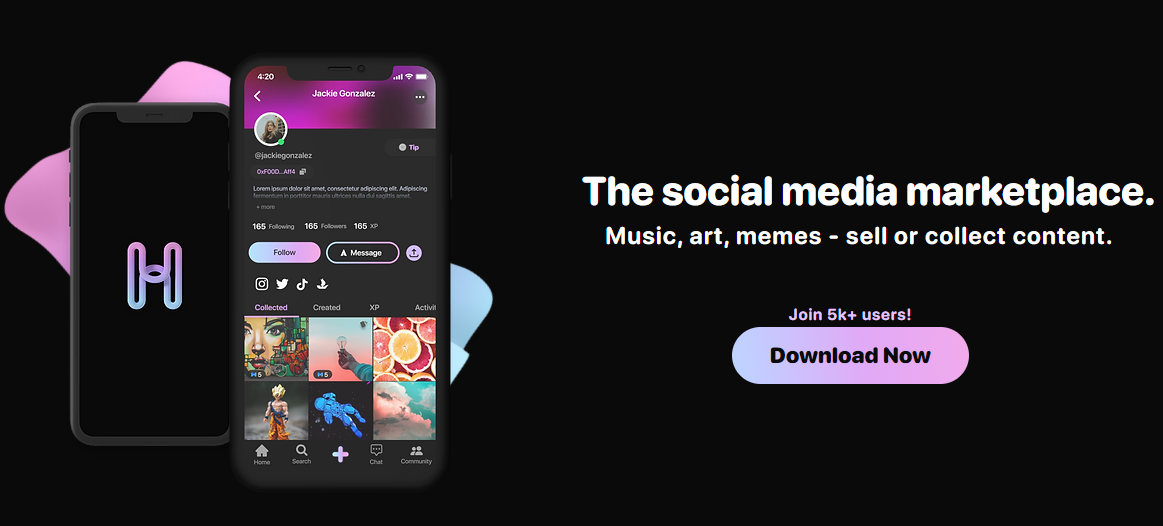The Future of Decentralized Social Media


Decentralized social media is a rapidly growing area in web3, as developers look to disrupt current social media tech giants. And for good reason – large social media corporations possess full control of their platforms, which has caused a litany of social ills regarding privacy, user control, data ownership, and de-platforming. For instance, Facebook breached data protection laws by allowing Cambridge Analytica to harvest the data of up to 87 million people without their consent worldwide. The next generation of decentralized social apps will address the drawbacks of web2 social media and set the stage for a brighter web3 future.
The Drawbacks of Web2 Social Media
Since its popularization in the early 2000s, social media has become one of the main ways modern society creates, stores, and shares ideas and information. Unfortunately, the current social media landscape is dominated by centralized platforms which has proven detrimental for users and creators alike. For example, centralized social media platforms:
- Claim full ownership of creator content and data
- Limit how a creator can monetize their content
- Sell user data
- Remain opaque with closed databases, algorithms, and source code
- Create a single point of failure which are at risk of data breaches and server outages
- Have complete authority over de-platforming and moderation
- Cause harm to users through algorithms that are designed to be addictive
The Future of Decentralized Social Media
Decentralized social media applications address the drawbacks of the current social media landscape by creating ecosystems that prioritize users and creators. The promise of decentralized social media:
- Creators retain full ownership of content and data
- New monetization models are possible that are fair to creators and content consumers
- Users have control over their own data and choose who to share it with
- The blockchain provides transparency on open-source algorithms and code
- Networks are resilient and lack a single point of failure
- The social graphs are open
- Community governance enables alignment between content creators and consumers
Decentralized Social Media Technology Stack
While decentralized social media applications are nascent, there is a large community of developers actively building a foundation for the web3 future. Messari recently released a chart on the decentralized social media technology stack:

Data Layer
The Data Layer has two key technologies that represent the backend infrastructure of decentralized social media applications. The first technology is smart contract ecosystems that store smart contract information and settle transactions. The second technology is content management platforms that are designed to manage and store content file data, like images, video, and text.
- Livepeer is a decentralized network that transcodes video
- Ceramic offers content storage on top of IPFS as well as an identity tool that serves as a cross-chain link to content
- Lit Protocol is primarily focused on privacy via content access control
Social Primitive Layer
The basic building blocks of social media are called primitives (e.g. users, followers, posts, and comments). These primitives define the basic data layouts and the relationships between data (e.g. who follows who or who owns a post). As the link between the primitives are established, a social graph is formed. Decentralized social graph protocols, like Lens Protocol, provide open data in a composable format for building decentralized social media applications.
Algorithm Layer
Algorithms drive activity on social media platforms (e.g. content recommendation, moderation, and search). In web3, developers will be able to create their own algorithms using an open social graph. Any front-end application can use these algorithms.
Front End Layer
The Front End Layer consists of applications with user-facing interfaces. In a decentralized ecosystem, front end applications use a modular approach and choose components from any layer to build a unique platform. With the shift in competitive dynamics away from user acquisition and proprietary data, decentralized social media platforms will likely need to compete on superior user experiences.
Decentralized Social Media Apps Using Livepeer Studio
Lenstube
Lenstube is a decentralized video-sharing social media platform built with Lens Protocol. Lenstube uses Livepeer Studio to process video on its platform.

Iris
Self-described as “Instagram x Patreon x Twitch x TikTok,” Iris is a social media platform built with Lens Protocol and Lit Protocol that combines the founders’ favorite social platforms into a unified decentralized application. Users can use the Iris front end to upload MP4 videos, and processed videos are uploaded to IPFS using the Livepeer Studio API.

Beem
Beem is a decentralized platform where filmmakers can upload their productions, distribute them to their audiences, and create live events with full ticketing management. Filmmakers can also invite guests and fans “on stage” and interact with them via live video and chat. Find out more about how Beem uses Livepeer Studio for livestreaming.

Huddln
Huddln is a mobile-native web3 project that helps users monetize their social media content. Users can use the Huddln XP protocol to track and incentivize on-chain and off-chain behaviors.
Huddln is built on Polygon, uses Livepeer Studio for livestreaming, and The Graph for its community leaderboard.
